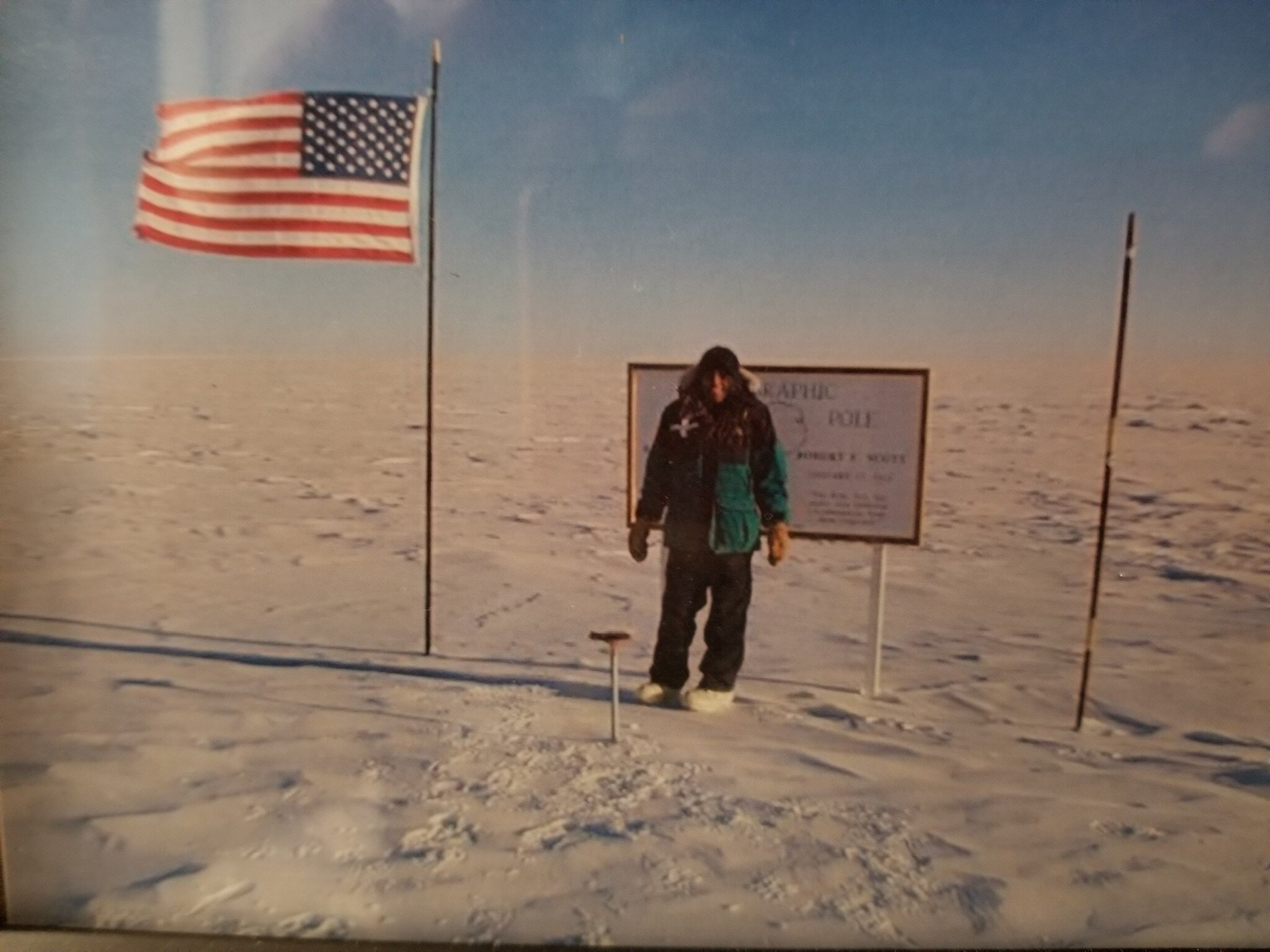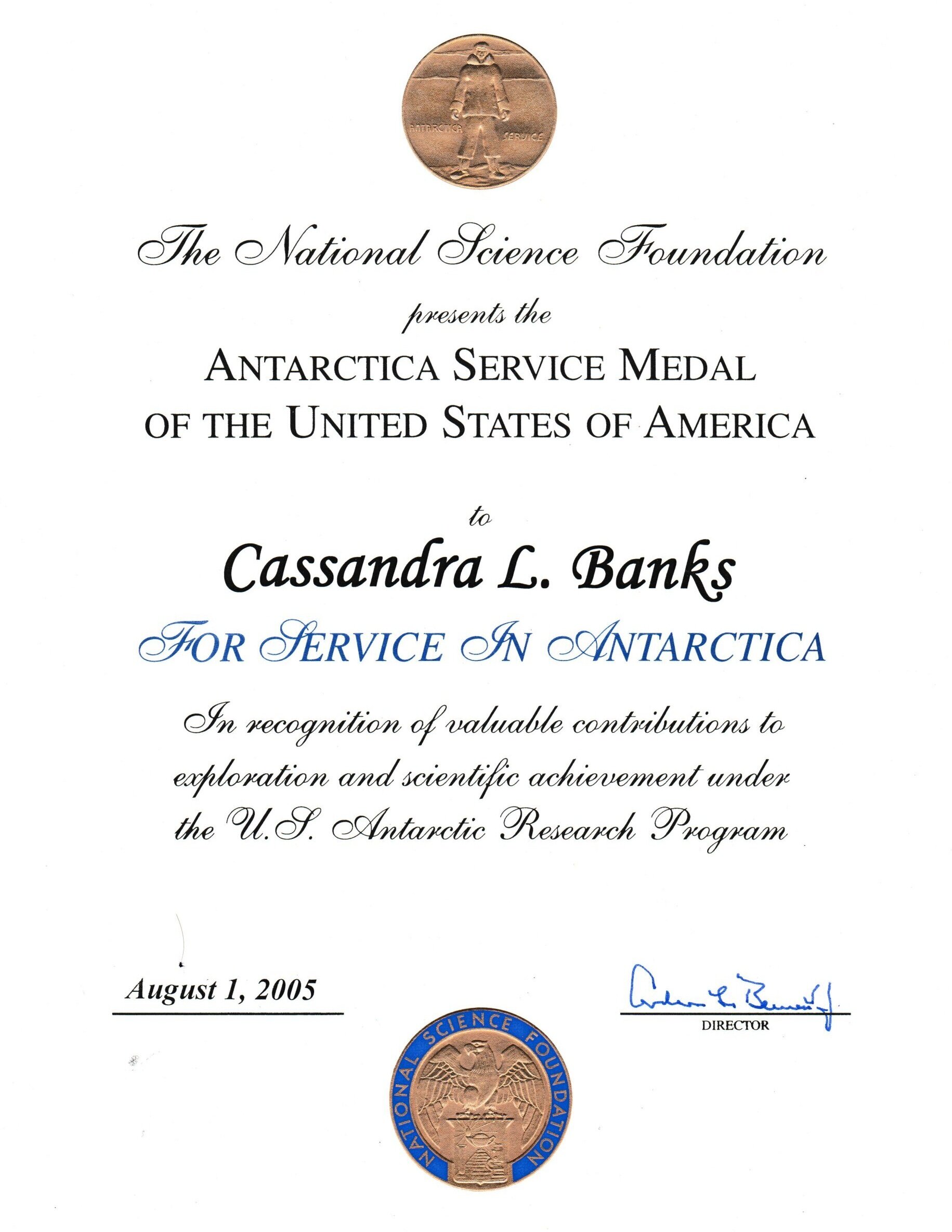

CASSANDRA BANKS
TRAILBLAZING ELECTRICIAN | ADVENTURER | WORLD TRAVELER
Cassandra Banks credits her mother’s love of foreign movies for the zest for travel that’s “in her blood.” Born in Yokohama, Japan, where her father was stationed in the military, Banks has traveled extensively -– and has visited all seven continents. That’s right, all seven continents. Banks’ desire to take on professional challenges led her to a job in Antarctica in 2004, making her the first black woman to stand at the remote and storied location: the geographical South Pole. This remarkable feat exemplifies her independent and trailblazing spirit –- an important attribute in a profession dominated by men.
During her youth in Augusta, Georgia, Banks had a fascination for taking things apart and putting them back together again, a talent considerable enough that her mother would often let her daughter try her hand before calling a professional. Her innate abilities helped establish her career path after the birth of her son, Brennan, as Banks sought financial stability for them both.
Apprenticeship
In 1979, Banks was accepted into a four-year apprenticeship with the International Brotherhood of Electrical Workers (IBEW) in Augusta. She had been hearing “there was pressure from the federal government to hire minority workers when she got in” and in fact, President Carter had signed an Executive Order to that effect during that year. She soon found that getting in was not the biggest hurdle she would face. In addition to juggling coursework, a full-time job, and motherhood, as the only black woman in her class, Banks faced adversity, harassment, and discrimination.
She credits Buddy Creech, her only mentor, for continually encouraging her. His words helped Banks get through the program. At her union swearing in ceremony, most of her classmates had several mentors standing behind them. Banks had only Creech, but one was all she needed. He was well-respected and his mentorship “spoke volumes to the local union.” She earned her classification of Journeyman in 1983.
Career
Banks began her career in Georgia then moved to New York for greater opportunities. One of her favorite jobs was at Rockefeller Center, shifting from spring to fall – being part of the transformation from restaurant seating to the famous ice rink. Being in New York was exhilarating for both Cassandra and Brennan, however it could have been tragic. Banks passed through the PATH train station beneath the World Trade Center on her way to a job site at the Food & Drug Administration mere hours before the planes hit on 9/11.
Banks’ career took her to sites around the country where she often found that black women and women of color were just getting into trade programs. She was the only black female Journeyman on most sites and was frequently mistaken for an apprentice. It is a misperception that follows her to this day. Still, Banks’ desire to set goals and take on challenges propelled her forward.
Although she enjoyed traveling to different job sites and working on projects both large and small, Banks found in renewable energy -– which she began in 2009 -– projects that she “loved so much,” she stayed. Why? “Building the large solar power plants in Nevada and California; providing megawatts of power for hundreds of thousands of homes is gratifying.”
To this day, she remains the only black woman on most job sites. Even working with another woman is rare. Banks does serve as a mentor whenever she can, helping the younger women who are apprentices circumvent many of the challenges she faced decades ago that still persist today.
To the South Pole
A CNN story in early 2004 reported by Daryn Kagan about a new station in Antarctica caught Banks’ imagination, who by then had moved to Riverside, California. Uncertain that they would take someone from the Golden State, Banks nevertheless decided to set her sights on the South Pole. And she succeeded. In October 2004, Banks departed for Antarctica –- the only black woman on the Raytheon crew. Initially signed on for three months during the austral summer, Banks chose to stay ‘overwinter’ for another eight months. The wonder of the skies amid the 24 hours of darkness was one of the reasons she was glad she stayed – seeing things she hasn’t seen since and learning from an astronomer at the site. Though Banks did not regret her decision to stay, she remarked that she also chose to be “on the first plane out” at winter’s end!
It must be noted that Barbara Hillary is credited as the first black woman on record at the South Pole, a feat she accomplished in 2011 at the age of 79 – seven years after Cassandra Banks stood at that spot. Banks is humble about her own accomplishment and does not diminish the accomplishment of Hillary. “I’m happy there is some recognition of a black woman.” Feeling no sense of competition, she added, “I was just grateful for the work.”
See and hear more about Cassandra’s South Pole experience.
Volunteer Work
Banks has also indulged her love of travel in service to others. As a volunteer with Habitat for Humanity International, she has travel to Guyana (twice), Portugal, Papua New Guinea (three times), Fiji, and Sri Lanka. Thinking they could use her skills in electrical work, instead she discovered that in these countries the houses being built usually had no plumbing and used generators for electricity. Still, she found the work satisfying and “liked that you had to have your wits about you … anything could go wrong at any time.”
Encouraging Other Black Women
As she reflects on her career, Banks does urge other black women and women of color to pursue a position as an electrician or in other trades. She noted that “ever since the union halls moved from the inner cities -- in the mid ‘80s and ‘90s – to the suburbs they weren’t as visible. Out of sight, out of mind.” She hopes CBF will help to change that.
Banks is pleased there is a renewed focus on the trades at a national level. “Not everyone is college material” and the trades provide dignified, sustainable jobs. She believes that the Foundation named in her honor is a “good and necessary idea.” Though she did not set out to be a trailblazer, Banks acknowledges that her story can serve as an inspiration to others. And her remarkable story continues….





